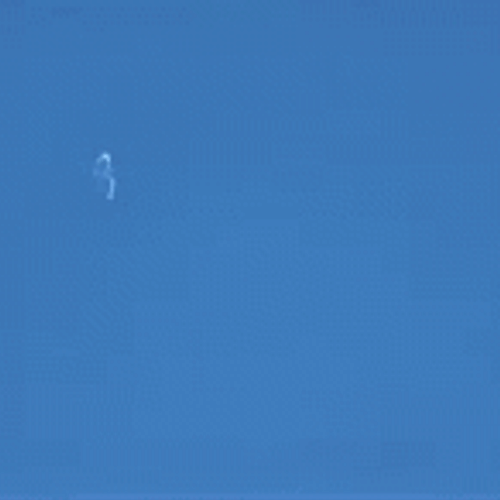| ID | #1674231961 |
| Добавлен | пт, 20/01/2023 |
| Автор | July N. |
| Источники | |
| Феномены | |
| Состояние | Гипотеза
|
Исходная информация
"Фортеана: странные небесные явления в Мексике, 1871–1899 гг." Д-р Рафаэль Лара Палмерос, CEFP для информационного бюллетеня Самиздата, 1994 г.
Таинственные объекты, увиденные в небе, являются частью неизвестной истории человечества. Они присутствовали в каждую эпоху и наблюдались миллионами людей во все времена, но очень редко упоминаются в официальных хрониках.
7 ноября 1878 года . В течение десяти дней город Тула-де-Тамалипас был свидетелем пролетов бесконечного числа мух с полудня до пяти часов вечера. Форма мух была очень странной, и они сбрасывали нити, напоминающие паутину.
Оригинальная новость
Forteana: Strange Celestial Phenomena in Mexico, 1871-1899
By Dr. Rafael Lara Palmeros, CEFP for the Samizdat Newsletter, 1994
Mysterious objects seen in the heavens are a part of humankind's unknown history. They have been present in every single age and have been observed by millions of people throughout time, but they are very seldom mentioned in official chronicles.
The authorities in charge of recording historical events simply consider that these events have not taken place, or are simply a product of the feverish popular imagination. However, side by side with the official history that closes its eyes in the light of anything it cannot understand, there exist other documents and unknown testimonies that register UFO and other strange phenomena in great detail. Mexico is no exception, and in the same way that the Scandinavian countries, the U.S.A., and others have reported the appearance of enigmatic objects in their skies, the records of ancient Mexican documents tell us a similar story.
On this occasion, we present a series of disquieting events which took place between the years 1871 and 1899, which constitute part of Mexico's oldest almanac, El Calendario Galván.
· March 5, 1871: In the state of Oaxaca, to the east, there appeared a burst of light followed by a clap of thunder. Since it occurred in the early morning hours (11:30 a.m.), the sun should have outshone it, yet it was so readily visible that its size was calculated at two and a half rods long by one rod in diameter. The frequency with which these incidents have taken place in the past year is truly remarkable.
· January 19, 1873: After a considerable rainstorm, red stains were found both on the grass and rocks in Papantla, Veracruz. This has been attributed to the fact that water raining down was actually red in color.
· January 29, 1873: It rained mercury over the village of San Ignacio in Sinaloa. Some amounts of were collected for posterity.
· March 27, 1873: A meteor was seen to pass over Querétaro between 6 and 7 in the evening. It left a luminous wake that issued sparks and roiled into twin clouds which later exploded like a bomb, scattering fiery fragments in every direction.
· November 7, 1878: For ten days, the town of Tula de Taumalipas has witnessed the passage of an infinite number of flies from noon until five o'clock in the evening. The flies' shape was very strange, and they dropped strands resembling gossamer.
· September 2, 1881: A brilliant meteor crossed the skies from one end to another, traversing the Veracruz meridian. Its light was greenish and its wake formed a white "head".
· May 9, 1883: Three different kinds of hailstone fell over Zongolica, Veracruz: one shaped like stars, others square, still other rounded like peaches and with a hole in the middle...the hailstorm over Oaxaca was notable for the fall of several chunks of extraordinary shapes, larger than has ever been seen before.
· November 9, 1894: The townsfolk of Zacatlán, Puebla are distressed by the appearance of a tremendously large bird that has been seen in the area of late. In the same way in which a hurricane blew a multitude of never-seen-before birds from the unexplored Chilá Mountains, it is not impossible that some monster, such as the one being seen these days, should figure among their number.
· December 20, 1899: In Laguna del Carmen, state of Campeche, it was reported that at 8:40 in the evening a meteor was seen crossing the skies from north to south with a splendid tail, glowing with a pale red light.
SOURCES
Entries published in the Calendario del Más Antiguo Galván, from its inception in 1852 to June 30, 1925. Mexico. 1926.
[Translation (c) 1994, 2023 Scott Corrales, Institute of Hispanic Ufology/INEXPLICATA]
Гипотезы
Полеты паутины

Осенью, в конце августа и начале сентября, в воздухе летает паутина. Так маленькие пауки мигрируют на сто, тысячу, или даже десятки тысяч метров. Там, где пауков особенно много, в Южной Америке например, они порой взмывают с земли такими тучами, что «все небо кажется в эти дни застланным паутиной».
Расследование
Итог
Войдите или зарегистрируйтесь, чтобы отправлять комментарии
